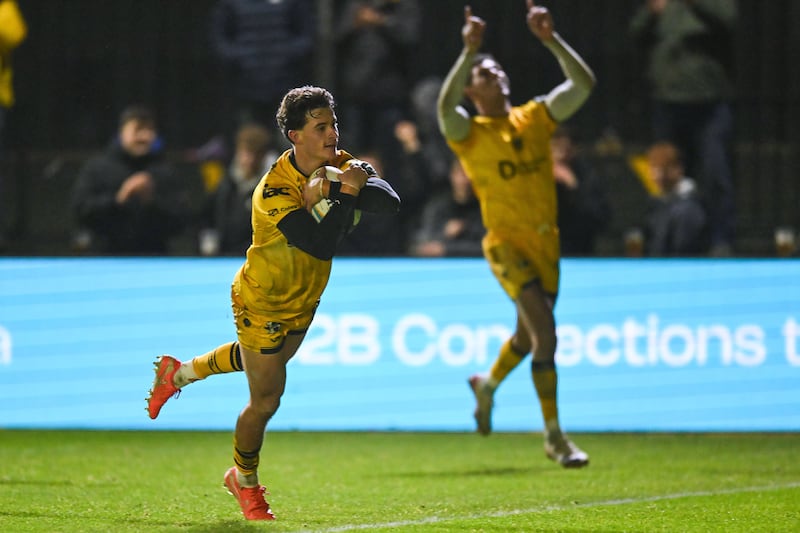Strolling by a line of white delivery trucks on Grafton Street, David Browne is more likely to point out the height of the buildings and the granite paving stones underfoot than the pretty stuff in the shop windows.
Browne has been an architect for decades and sees the creation of good streets as the route to making cities better. When those noisy trucks disgorge their goods in Dublin’s premier shopping street, many people find they disrupt a treasured pedestrian area. But Browne says the morning delivery run is a sign of an orderly street.
“This is a very a good idea,” he says. “Instead of building big access bays at the back, they quite simply just come through the front and make their deliveries. By 11am they’re gone.”
[ Hard not to greet the Dublin City Taskforce report with cynicismOpens in new window ]
On a bright, dry Monday in autumn, we are walking through central Dublin as the city dusts itself down after the weekend. With us are Jim Coady, another architect, and Dick Gleeson, an urbanist, the formal term for a person who studies and plans cities and towns.
READ MORE
Each is a member of Irish Cities 2070, a pro-bono research group on a mission to improve the country’s urban centres for the next half-century. This informal body of architects, planners, engineers and urban designers is backed by the Royal Institute of the Architects of Ireland and the Irish Academy of Engineering.
Irish Cities in Crisis, a new book from the group, is a clarion call to revolutionise planning and design as Ireland’s cities and towns face the complex challenges of population growth, climate change and ugly urban sprawl. After chronic neglect for generations, the group says the time has come to end the bad national habit of giving too little attention and resources to urban planning and development.
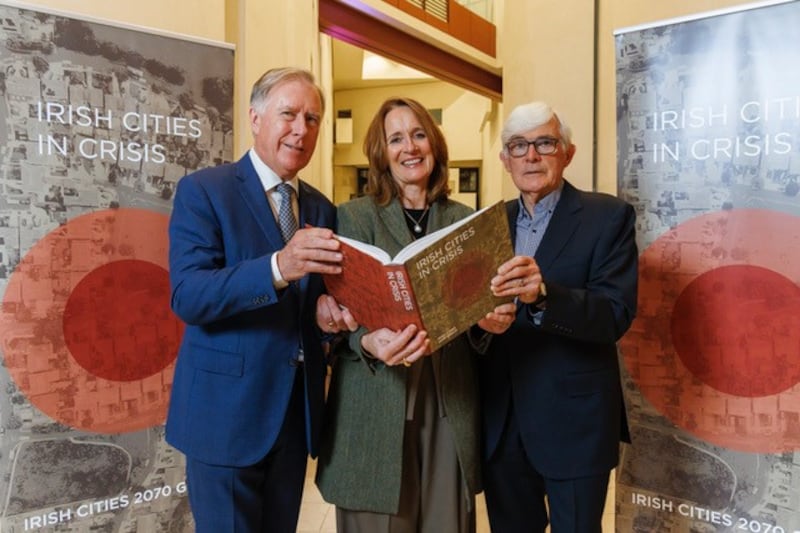
At about 700 pages, it is weighty. But the basic message is simple enough: if the restoration of city living is the key to a sustainable future, the lost art of city-building must be retrieved. After a century in thrall to motorists and their cars, this is an urgent task that requires a sea change in the way Ireland does things for the coming decades. Embraced within it is the idea that well-designed streets, squares and public realm are integral to successful cities.
The ideal is to create 15-minute neighbourhoods with a sense of place, where most people’s needs can be met within a 15-minute walk, cycle or public transport ride. Easy to say, but difficult to do – and the challenge is all the greater given projections that the island’s population could reach some 11 million by 2070, from 7.2 million today. Such a population would “almost double demand for food and water and require an additional 2-2.5 million dwellings”.
This manifesto for change embraces Browne’s “toolkit for making good streets”, one of the elements that underpin a city’s essential character. His 10-point action plan for improving existing streets includes encouraging ground-floor activity with small businesses and discouraging blank walls facing on to the street. A similar 10-point plan for making new streets includes the promotion of “walkable neighbourhoods with interconnected streets and squares” to promote social interaction.
“Until the middle of the 20th century, it was common for people to live in the centre of cities and towns, mostly above shops. This way of living is almost completely lost in Ireland. In contrast the tradition continues in most European cities and towns, resulting in an inherent life and vibrancy,” writes Browne.
“Such cities and towns are not, for the most part, empty, threatening places at night-time because there is always a sense of ‘eyes on the street’, something Irish cities have lost. Might the recent riots in Dublin in November 2023 have been avoided if people lived in apartments in the upper floor of the city centre streets?”

Did the Dublin Taskforce have one new idea?
At an event this week, an all-male panel led by Taoiseach Simon Harris, went through the Dublin task force’s 10-point plan.Irish Times Dublin editor Olivia Kelly was there to find out if the task force’s 10 “big moves” offered a new vision for the city – and one where the words might translate into action.She tells In the News what the 10 “big moves” are and how – after she shook off the felling of deja vu – the report, which borrows heavily from the 70-plus such reports that have gone before, might make a difference for Dublin.Presented by Bernice Harrison.
Our amble through Dublin takes us from takes us from Grafton Street on to Wicklow Street, another thriving commercial thoroughfare, with the walkways of South William, Clarendon and Drury streets nearby. “Each one has a different role and almost a different scale but the combination of all of them adds terrific diversity,” says Gleeson.
“The street in all Irish towns, cities and European cities was the fundamental building block, and you formed a network of streets that was interconnected. In the last 50 years in the suburban-type development, where the dominant theme is a very limited form of building typology – domination by the car – the street lost its role. We’re saying we have to revisit that again.”
It is a busy Dublin morning, with no shortage of people going about their business. After the barren years of Covid-19 and its aftermath, it seems workers, walkers, shoppers and students really are back in the capital. If that is a positive sign, it does nothing to detract from the urgency of the 2070 group’s passionate appeal to recognise that radical action is needed now to build better for the future.
“A crisis is looming for Irish cities,” write Browne and Coady. “Rapid urbanisation is progressing without the required systems of governance, planning, urban design and proper development in place to enable the creation of much-needed, affordable, beautiful neighbourhoods for people to live and work in, and thereby attract and retain investment and talent.”
With a general election on the way, this presents daunting questions for politicians of all hues. But the 2070 group is looking beyond the noisy battle cries of the immediate campaign to demand action now for the long-term that could determine Ireland’s fate well into the latter years of the century.
“Failure to plan well is evident in current housing shortages, underinvestment in power, water and broadband networks, severe traffic congestion, long commutes in private cars, underdeveloped public transport systems, car-dominated public realms in towns and cities, depopulated city and town centres, and the sprawling suburbs and one-off houses that surround our towns and cities,” say Browne and Coady.
“Unresolved, these issues will undermine our economic and social futures. Unless we can offer a sustainable alternative model that makes city living attractive for us all, we will fail to reap the benefit of our current economic success, which is unique in Europe.
“An historical preference for car-oriented development, compounded by sprawling suburban development and lack of investment in public transport, contributes to inefficient land use, traffic congestion, burning of fossil fuels, air pollution and carbon emissions.”
The irony underlined by Gleeson is that Irish towns historically were well-structured and highly sustainable. The street was the fundamental building block, formed with terraced buildings in which mixed use was “assumed and encouraged”. Places of work sat “happily” alongside homes. Urban squares and marketplaces added to the public realm.
“Sadly, these qualities are almost totally absent from Irish town and city expansion over the past 50 years, with only a few notable exceptions,” says Gleeson. “While Ireland has experienced significant population increase, towns have been shaped by low-density, estate-type development, with little variation in housing typology, and designed around the needs of the car.”
Development tended to strip out social, cultural and community infrastructure, he adds, noting the lack of emphasis on neighbourhood planning in Ireland in recent decades.
“The problem is over 25-30 years a lot of those towns – hundreds of them – have been hollowed out due to traffic congestion in the centre ... and then out-of-town investment.”
We cross Dame Street into Temple Bar, a prime exemplar of forceful government intervention to improve a city district. Criticised for too many stag parties and too little culture, the area looks a bit bedraggled in the crisp morning light. But there is no mistaking the character of the revived cobblestone lanes that survived dereliction and were once destined to be a bus depot.
Curved Street and Meeting House Square stand out still as new innovations in an ancient place. “The interesting thing here is you’re getting the mix of the old and the new – and the careful insertion of the new into the old is very important,” says Browne.
At the root of the group’s vision is the idea of the vibrant “compact city”, embracing higher density housing to improve city accessibility and redeveloping exiting sites to intensify the use of existing infrastructure. “The ‘compact city’ comprises a network of neighbourhoods, each with its own parks and public spaces and a range of private and public activities capable of accommodation population diversity and cultural differences.
“Proximity of uses, located within a safe, well-designed public realm, with easy access to nature, and exploitation of smart urban technologies (including smart energy grids, improved public transport and AI-driven traffic management systems) can radically enhance the quality of life in the ‘compact city’ model.”
The group adds: “Vibrant cities are attractive places to live, work and invest in. While good infrastructure is critical for cities for grow, vibrancy is the self-generating dynamo that attracts people and encourages investment of effort and capital.”
One of the elements of vibrancy is a diverse physical environment: “Small city blocks with plentiful pedestrian connections, diversity of people and buildings, and a healthy mix of low- and high-rent buildings couple with a mix of tenure types.”
We cross Parliament Street into the western part of Temple Bar, proceeding down the pedestrianised West Essex Street towards the corner of the sloping Cow’s Lane, another new thoroughfare in a historic city quarter. The basic idea in the new buildings is ground-floor retail, among them a bakery, below upper-floor apartments.
“The kind of uses here are way down lower in terms of cost than Grafton Steet,” says Coady. “The upper floors were built purposely as apartments and rented apartments – and rented presumably at significant weekly and monthly costs. But the ground floors are much sleepier. It’s kind of bookstores. It’s a much more relaxed, low-rent activity, but for all that the kind of mixed use that we desperately want to have in our towns and cities.”
The 2070 group blames Ireland’s planning system for facilitating low-density suburban expansion and urban sprawl with little consideration for the idea of place, described as “the characterful streets and green spaces that are intrinsic to urban life, and that underpin wellbeing and health”.
Drawing lessons from successful European cities such as the capital of Demark, Copenhagen; Freiburg in Germany; and Málaga in Spain, the group says planning and development in such places “contrasts sharply” with Irish practice.
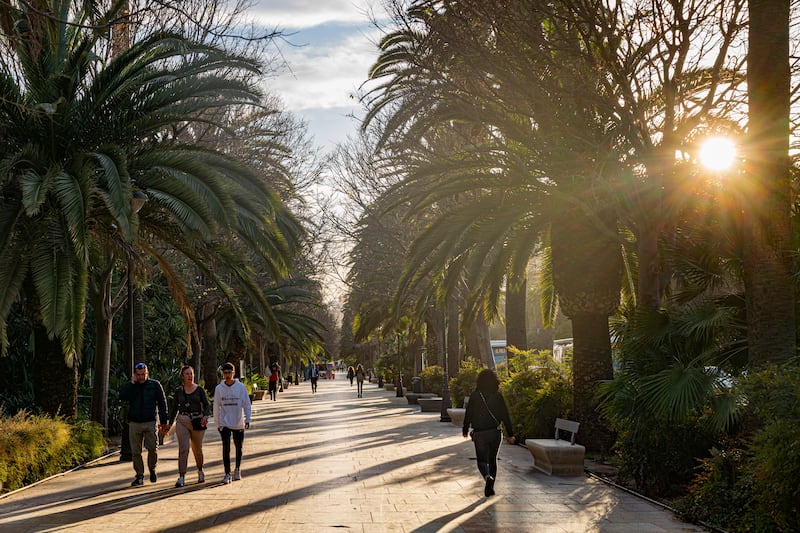
“Ireland’s public governance is highly centralised, with very high levels of political and bureaucratic control retained at national level. This severely limits the ability and capacity of regional and local authorities to creatively address the priorities, growth and development of their regions, cities and towns.
“To equip Ireland to face the challenges of the next 50 years, central government must cede power and resources to properly structured and accountable regional and local authorities.”
Ideas that work well elsewhere include more autonomy for local government than is the case in Ireland and longer planning cycles.
“Up to 40 per cent of municipal budgets come from local taxes in the EU examples examined (compared with less than 10 per cent in Ireland), and low-interest loans are available to finance master-planning and infrastructure development,” the group says.
“Municipalities can acquire land at little more than current value before rezoning and can force land purchase in the interest of the greater good.”
At Grattan Bridge we cross the Liffey towards Capel Street, pedestrianised in 2022. Coady notes separate doors on the main thoroughfare for historic upper-floor housing, an example to follow. Here the extraordinary diversity of a city in flux stands out. One stretch of the street has Korean, Chinese and Vietnamese food joints and a Brazilian shop. A side street nearby is the same, with Filipino, Hong Kong and Portuguese outlets side-by-side.
We turn on to Parnell Street. A thriving 19th-century commercial area, it endured decades of decay before Celtic Tiger investment introduced new housing and commerce. Today this place is heaving again. “Despite the fact that it’s not the prettiest street it’s actually quite a successful street because it’s very vibrant,” says Browne.
Málaga, Spain A successful city
‘Cars had dominated but now it’s understood that the city is for people’
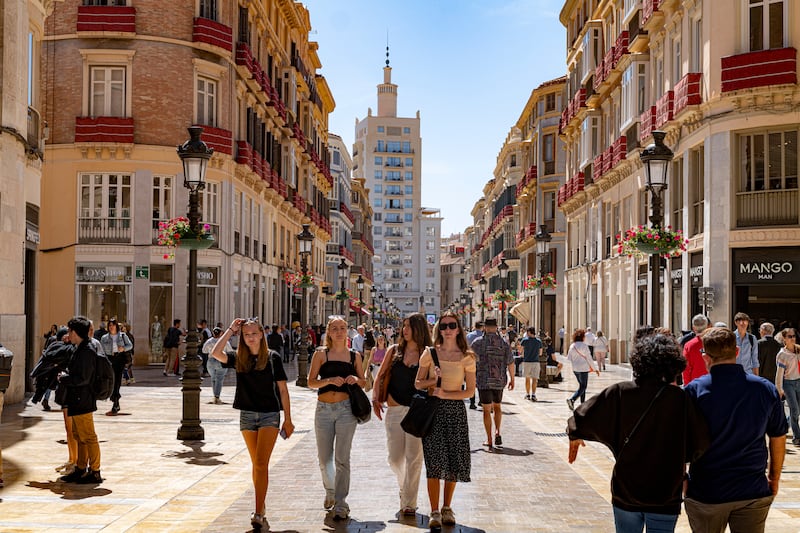
The Irish Cities 2070 group describes Málaga in Spain as an example of a “successful European city”. Guy Hedgecoe reports.
Not long ago, few Spaniards saw Málaga as a success story, with much of the city in disrepair, few sites to draw visitors and traffic congesting its streets.
But the capital of the Costa del Sol has undergone a transformation, driven by investment in culture, a hard-won battle to keep cars out of its centre and a growing reputation as a tech hub.
Málaga has a history that stretches back three millenniums, during which time it was prized by Phoenicians, Romans and Moors alike for its climate and location on the western reaches of the Mediterranean. Today, it also has enviable transport links, with a busy international airport and a high-speed rail connection which means Madrid is less than three hours away.
With 580,000 inhabitants, it is the second-most populated city in the vast southern Andalucía region and the sixth-most populous city in Spain.
As recently as the 1990s, the city had little cultural cachet, being known more for its beaches and bars. But substantial investment in the arts has changed that, led by the Picasso Museum – the artist was born in Málaga – which opened in 2003 and drew 780,000 visitors last year. The Centre for Contemporary Art, housed in a post-war marketplace, opened the same year while a branch of Paris’s Pompidou Centre, occupying a multicoloured transparent giant cube, and Málaga’s Carmen Thyssen Museum, have both opened their doors since.
Some believe Málaga has become too attractive for its own good. The extremely high rate of tourist apartments in the centre is widely blamed for pushing rents up
In addition, the port area has been adapted for pedestrians, with a large mall making it part of the city’s shopping experience.
Much of this regeneration has been driven by EU funding. That has also been the case with the pedestrianisation of streets in the historic centre, such as the famous Calle Larios, which faced stiff resistance from local businesses.
“The business owners really thought it would be the ruin of the city,” says Málaga-based architect Francisco Aguilera Balbontín, of the firm RKD.
But the lack of traffic only increased footfall. “And it made people walk,” he adds. “Until then, cars had dominated but now it’s understood that the city is for people.”
Yet some believe Málaga has become too attractive for its own good. The extremely high rate of tourist apartments in the centre is widely blamed for pushing rents up and sending Malagueños, who have one of Spain’s lowest GDP rates per capita, elsewhere to find affordable accommodation.
Among the visitors are digital nomads who are drawn not just by the city’s climate and location, but also its growing status as a technology hub.
Francisco de la Torre, the conservative who has been mayor of the city since 2000, says he aims to make Málaga a “city that is committed to a more digital, connected and sustainable era”.
“It’s about bringing together those who produce technology and those who want to use it,” he has said. “Málaga can be a capital of technology training and education.”
Málaga’s knowledge-economy ambitions are clear to see in the Technology Park Andalucía (TPA), which houses about 600 companies and specialises in ICT. This has encouraged talk of the city and its surrounding province becoming “the Silicon Valley of the Mediterranean”.
David Browne’s toolkit for improving existing streets
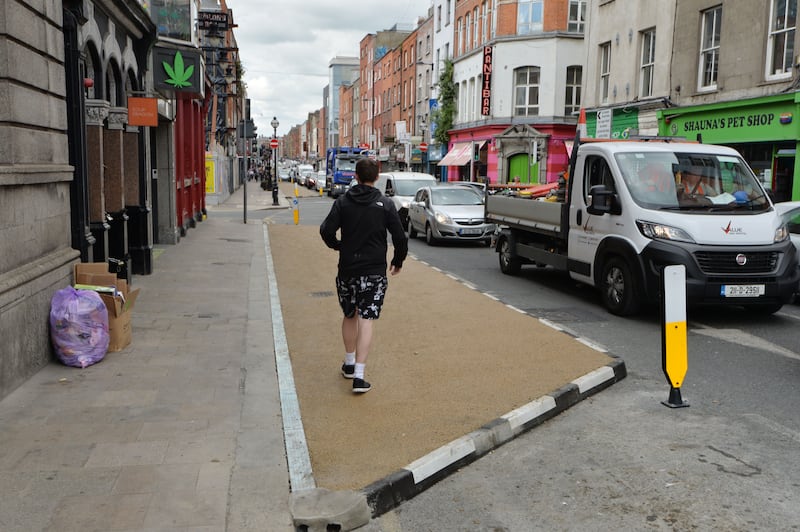
- Prioritise pedestrian safety and comfort: Traffic calming, lower speed limits, wider pavements, benches for pedestrians.
- Enhance public transport and active travel: Dedicated bus lanes and shelters, expand pedestrian and cycling infrastructure.
- Promote mixed-use development: Encourage zoning for housing, commerce and recreational space in close proximity.
- Accommodate and prioritise all users: Cater for pedestrians, cyclists, and public transport riders alongside motorists.
- Ground-floor activity: Promote small businesses, cafes and shops to enhance street vibrancy and safety.
- Enhance green infrastructure: Use trees and mini-plazas to make green spaces for relaxation and social interaction.
- Reduce dependence on cars: Promote car-sharing and ride-sharing, encourage car-free zones in designated areas.
- Engage community participation: Involve residents, business and stakeholders in planning, promote placemaking initiatives that celebrate local culture, heritage and identity.
- Implement tactical urban projects: Use temporary, low-cost interventions such as pedestrian events to improve streets. Gather local feedback and data to evaluate them before permanent change.
- Maintenance and long-term planning: Allocate resources for repaving, cleaning and graffiti removal. Develop strategies for street improvement as part of broader urban development goals.
This toolkit is taken from Irish Cities in Crisis, published by the Royal Institute of the Architects of Ireland
- Sign up for push alerts and have the best news, analysis and comment delivered directly to your phone
- Join The Irish Times on WhatsApp and stay up to date
- Listen to our Inside Politics podcast for the best political chat and analysis














